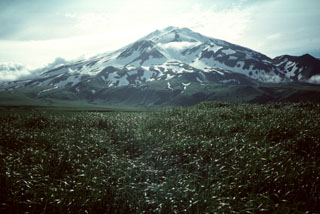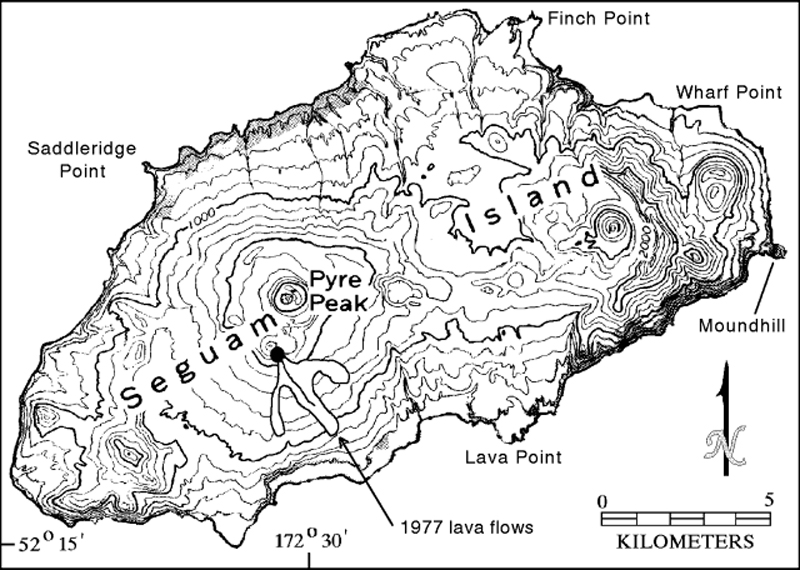Report on Seguam (United States) — December 1992
Bulletin of the Global Volcanism Network, vol. 17, no. 12 (December 1992)
Managing Editor: Lindsay McClelland.
Seguam (United States) Small ash eruptions
Please cite this report as:
Global Volcanism Program, 1992. Report on Seguam (United States) (McClelland, L., ed.). Bulletin of the Global Volcanism Network, 17:12. Smithsonian Institution. https://doi.org/10.5479/si.GVP.BGVN199212-311180
Seguam
United States
52.315°N, 172.51°W; summit elev. 1054 m
All times are local (unless otherwise noted)
Small ash eruptions from a satellite cone 1.5 km S of the W caldera's central cone (Pyre Peak) (figure 1) were observed on 27 and 30 December 1992 by the U.S. Coast Guard . . . . Activity on the 27th consisted of an ash plume that extended 24 km N from the island at 1,200 m altitude. On 30 December, discrete explosions ejected ash to several hundred meters height. Ash fell S of the vent, which appears to be located near the N end of a line of lava fountains observed during the 1977 eruption. The vent site consists of a cluster of cinder cones and craters, which was probably the source of a prehistoric basaltic lava field covering ~21 km2.
Geological Summary. The 11.5 x 24 km island of Seguam, between Amlia and Amukta Islands in the central Aleutians, contains two calderas with Holocene post-caldera cones. Growth of the basaltic-to-rhyolitic Wilcox volcano on the east side of the island during the late Pleistocene was followed by edifice collapse and an associated ignimbrite eruption about 9,000 years ago, leaving a caldera open to the west, inside which a rhyolitic cone was constructed. The 3 x 4 km westernmost caldera has a central scoria cone, Pyre Peak, which rises above the caldera rim and is the source of most of the reported eruptions. A very young basaltic field surrounds Pyre Peak, and lava flows partially fill the caldera and reach the southern coast. Older Holocene lava flows were erupted from vents within the eastern caldera, and a monogenetic Holocene cone forms Moundhill volcano on the eastern tip of the island.
Information Contacts: Michael Doukas, USGS Anchorage.


